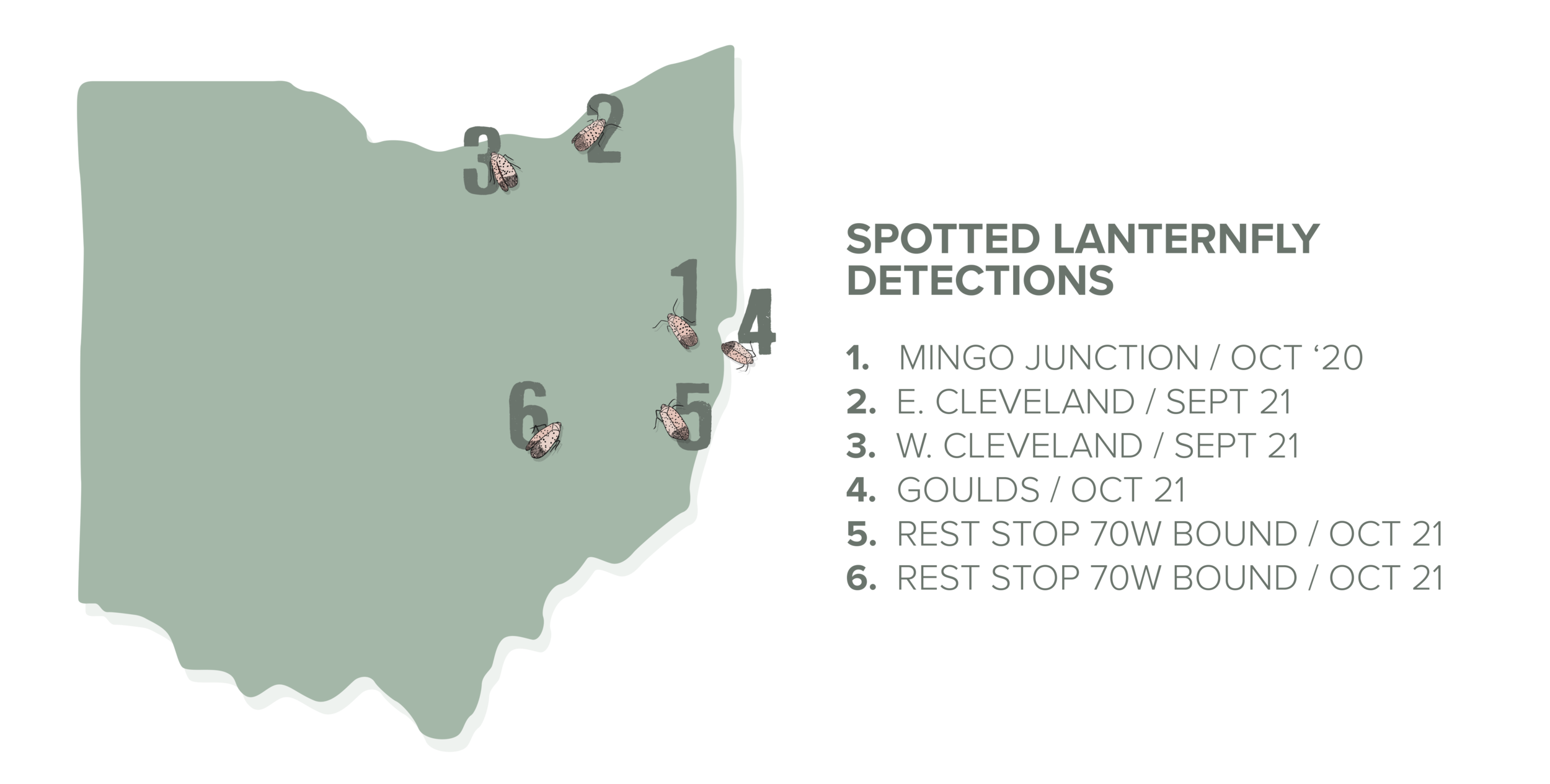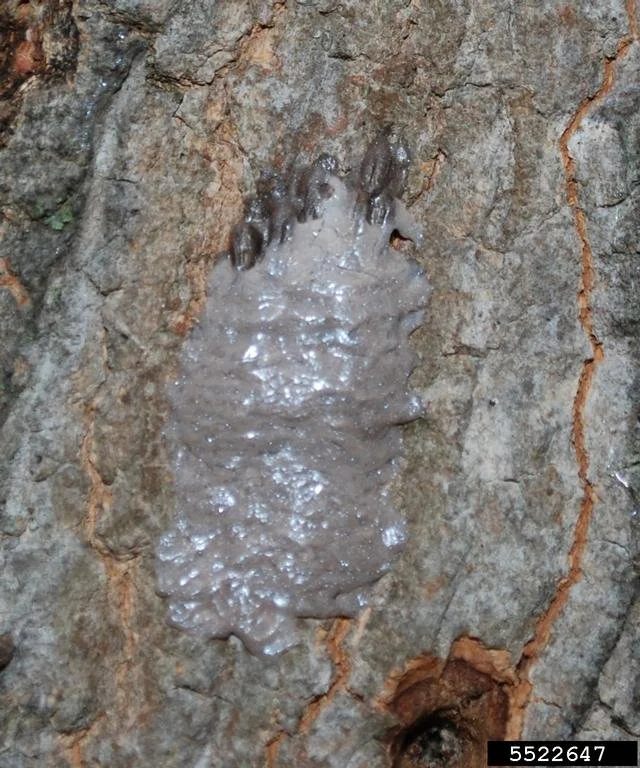If you are among those of us in the tree or insect world, you’ve likely heard of the Spotted Lanternfly (SLF). This pest showed up in the Southeastern region of our neighboring state of Pennsylvania in 2014. This is an invasive sap sucking insect that has the potential to disrupt a variety of industries. The preferred host is the infamous Tree of Heaven which initially may sound like good news; let’s have an invasive insect wipe out an invasive plant! (See TJ’s article about Tree of Heaven). However, Tree of Heaven is not its only target. If Tree of Heaven isn’t around, it will simply jump onto the nearest tree until it finds something it likes. SLF has been documented feeding on over 100 different species of plants. The most susceptible, other than Tree of Heaven, is Grapevine, apple and peach trees, hops, blueberries, Black Walnuts, and Maples, but again, this pest doesn't discriminate! Another reason why it is so invasive is that it doesn’t have any natural predators. The flashy color on the Spotted Lanternfly warns potential predators that “I don’t taste good!”
The OSU Extension office is currently researching best treatment options. Unfortunately, so far, they do not have any recommendations but we are watching the situation closely and when we have more information, we will give everyone an update. For now, it’s important to be aware of the potential infestation in your area and monitor. If you see any suspected SLF activity, report it to the OSU Extension office and they will confirm.
What can we do to slow the spread?
Known areas of infestation in Pennsylvania have a quarantine mandate requiring to go through a checklist before traveling or moving within or out of the quarantined area. In Ohio, the Department of Agriculture has put together this checklist to help slow the spread of this pest.
If eggs are found, you can scrape the eggs into a bag to seal them/crush them or kill them in an alcohol solution. During these early stages of spread, it is important to document anything you find; please take pictures of any suspected Spotted Lanternfly or collect a sample if possible and send it to the OSU Extension office along with the location you collected the sample.
So far, six populations of Spotted Lanternfly in been confirmed in Ohio:
To do now:
Look for egg masses. They lay eggs from September-December and are hard to see but we need to search and destroy them! The eggs will start hatching this spring, likely around May (GDD 270).
Late spring/early summer:
When they start hatching, they will look like little black insects with white spots, and they will not turn red until about mid-summer. Watch out for the combination of honeydew/black sooty mold/wasp swarms around your trees, because it could be an indicator of an invasion.
In Review
To review, Spotted Lanternfly is an invasive insect that is on the move and we need to try and stop the spread. Its primary host is Tree of Heaven but it can feed on the sap of over 70 different species of plants. When travelling and vacationing this summer, please be diligent in inspecting your vehicles, camping equipment, and basically anything that is exposed and stationary for more than a couple of hours, especially in known outbreak areas. If found, please report it to the OSU Extension office so we can help better understand this insect. We will keep everyone up to date (check our ARBOR ED™ section) on any new information and let you all know if we receive any news about confirmed populations in our area.
[Images courtesy of Ohio State University Extension, New Jersey DOA, Pennsylvania DOA / Drawings by Kenny Greer, Russell Tree Experts]Lindsey Rice | Office Manager, Russell Tree Experts
Lindsey joined Russell Tree Experts in 2015 with a B.S. in Agribusiness and a minor in Horticulture from The Ohio State University. Growing up in Northwest Ohio, she participated in various sports, band, and FFA which ultimately inspired her love for the tree industry. She loves to spend her free time outdoors with her husband and daughters.










